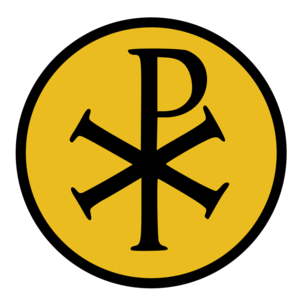The Byzantine Empire
Byzantine Empire was the eastern half of the ancient Roman Empire which, unlike western part of Empire, had survived various and and numerous barbaric invasions.

Coat of arms

Shirt
| Position | First name | Last name | Mjesto rođenja | Like | Dislike | |
|---|---|---|---|---|---|---|
| GK | Danijel | SUBAŠIĆ | Zadar |
70 |
5 |
|
| GK | Lovre | KALINIĆ | Split |
37 |
5 |
|
| GK | Volkan | BABACAN | Antalya |
8 |
14 |
|
| DC | Ahmet | CALIK | Ankara |
7 |
6 |
|
| DC | Kostas | MANOLAS | Naxos |
30 |
2 |
|
| DRC | Sokratis | PAPASTATHOPOULOUS | Kalamata |
25 |
6 |
|
| DRL | Šime | VRSALJKO | Rijeka |
54 |
7 |
|
| DR | GÖKHAN | GÖNÜL | Samsun |
3 |
8 |
|
| DL | Ivan | STRINIĆ | Split |
30 |
6 |
|
| DL/ML | Konstantinos | STAFYLIDIS | Thessaloniki |
9 |
6 |
|
| DL/MLC | Caner | ERKIN | Balıkesir |
11 |
13 |
|
| DC/DMC | Caglar | SÖYÜNCÜ | Izmir |
7 |
13 |
|
| DMC | Ozan | TUFAN | Bursa |
8 |
12 |
|
| DMC | Selcuk | INAN | İskenderun |
11 |
12 |
|
| DMC/DC | Mehmet | TOPAL | Malatya |
4 |
8 |
|
| MC | Andreas | SAMARIS | Patras |
13 |
3 |
|
| MC | Luka | MODRIĆ | Zadar |
90 |
8 |
|
| MC | Sergi | DARDER | Arta |
5 |
3 |
|
| MRLC | Cengiz | ÜNDER | Balikesir |
4 |
5 |
|
| AMRLC | Arda | TURAN | Fatih |
18 |
5 |
|
| AMRLC | Kostas | FORTOUNIS | Trikala |
23 |
10 |
|
| AMRLC | Marco | ASENSIO | Palma de Mallorca |
21 |
0 |
|
| AMRL | Alen | HALILOVIĆ | Dubrovnik |
17 |
12 |
|
| AMRL | Ivan | PERIŠIĆ | Split |
80 |
5 |
|
| AMRL | Nikola | VLAŠIĆ | Split |
41 |
3 |
|
| FRLC | Domenico | BERARDI | Cariati |
19 |
2 |
|
| FRLC | Enes | ÜNAL | Bursa |
8 |
9 |
|
| FC | Burak | YILMAZ | Antalya |
10 |
10 |
|
| FC | Graziano | PELLE | San Cesario di Lecce |
12 |
3 |
|
| FC | Ivan | SANTINI | Zadar |
22 |
5 |
|
| FC | Kostas | MITROGLOU | Kavala |
18 |
2 |
|
| FC | Nikola | KALINIĆ | Split |
48 |
11 |
|
| FC | Sergi | ENRICH | Ciutadella |
8 |
4 |
(Today part of: Turkey, southern and eastern Greece, parts of western Croatia, parts of western Albania, southern Crimea, Isles Baleares, parts of southern Italy)
When referring to the Eastern Roman Empire, whose capital city was Constantinople, the term Byzantine Empire was used, so as not to confuse it with the Roman Empire of classical antiquity, whose ancestry many states of the Middle Ages had laid claims to. Nevertheless, one should keep in mind that its citizens referred to themselves as Romaioi (Romans) and their state the Romaic Empire. The Byzantine Emperors had, since the times Christianity was proclaimed a free religion at first, and then the only allowed religion in the Empire (4th century), held themselves to be the supreme figures in the hierarchy of the Church. This position of the Emperor had inevitably led to the conflict between the Emperor and the bishop of Constantinople, who was his subordinate, on the one side, and the Roman bishop (pope) on the other – who had deemed himself to be Christ’s representative on Earth, therefore emperors too, as well as other believers, should have to subjugate themselves to the directives of the Church. Seen as how the Church did not even have an established official dogma, nor a centralized inner organization, hierarchy, or infrastructure, the Roman and Constantinople dioceses came into conflict over the primacy over Christians in the Empire.
In the Byzantine Empire the crises had often been caused by political and religious motives, with consequences for the whole Christendom, such as, for instance, the conflict over the worship of holy Icons of saints (726 – 842). Furthermore, the Byzantine Empire had, since the 6th century onwards, constantly been under threat of incursions by the Avars, Slavs, and finally Arabs, who had brought with them the religious, cultural, and economic rivalry of Islam. Under their attacks the Empire had lost their lands in the Middle East and northern Africa, and the Lombards had occupied a large part of the Apennine Peninsula. The situation had only become worse with the rise of the Bulgarian state in the second half of the 9th century.
Sources
- Sources:
- ACHARYA S, Plan Krist, Zagreb, 2009.
- Grupa autora, Povijest: Rani i razvijeni srednji vijek , knjiga VI., Zagreb 2008.
- ''Bizancij'', (http://enciklopedija.lzmk.hr/clanak.aspx?id=44567)
- ''Bizantsko Carstvo'', Velika ilustrirana enciklopedija, Zagreb, 2009.,198-199
- ''Byzantine Empire'', https://www.britannica.com/place/Byzantine-Empire
- Coat of Arms:
- Bizantsko Carstvo: https://www.tumblr.com/search/byzantine%20symbols
